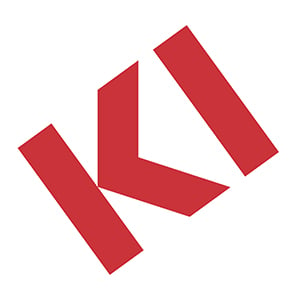Human-centered design is a buzz word that spans industries. If you Google this term, you'll find everything from software to graphic design. Pioneered by IDEO, it is a creative approach to problem solving that puts humans front and center when designing products, services, systems and experiences.
KI leads the way with education products specifically developed using human-centered design. We strive to improve the lives of students and teachers through our products. We're the first to say that traditional classroom layouts are just that, traditional. Studies have shown that children are able to focus, be more productive and are more engaged when offered a variety of ways to learn. Movement is also shown to be essential to cognitive development.
Traditional classrooms with static, front-facing rows and immobile furniture are not conducive to interactive learning, collaborative discussion or hands-on, project-based learning.
This research, coupled with our education market knowledge, led us to the idea of the Ruckus Collection, classroom furniture solutions that give users freedom and independence within the learning environment. We didn't follow a conventional product development path for Ruckus. Typically, manufacturers will review product portfolios and conduct formal surveys with architects and designers. Feedback is gathered and the design process begins.
Observations: Ruckus and human-centered design in education
Instead, KI's design team took a human-centered approach and immersed themselves within real-world learning environments. All too often, product features outweigh functional merit. Shifting the focus from what a product is, to what is does and who it serves, dramatically alters its value.
It was essential that we include the human perspective and the user experience in our product development process. We wanted to meet the people we were designing for. We wanted to see how students and teachers actually used space, interacted with one another and evaluate their problem-solving processes for the classroom. Actual users were our best possible resource when trying to define and develop the Ruckus Classroom Collection.
Observing and being present within an active classroom was key to identifying and creating solutions to the problems students and teachers encountered. We witnessed first-hand teachers struggling to move heavy chairs and immobile desks, inhibiting teaching and learning. Students were unable to easily form groups or separate for individual study. Teachers brought personal totes to store classroom items while students lacked practical areas to stow backpacks and personal items. Static rows prohibited students from collaborating. There was also very little movement in the classroom.
Our observations reinforced our belief that products and environments are for and about people. Involving the human perspective allowed us to validate our design intentions. The Ruckus Collection was designed to support not only physical needs but behavioral needs as well.
We developed an innovative and revolutionary collection for the classroom that gives freedom and choice to students AND teachers. Classrooms can be reconfigured on the fly using mobile Ruckus chairs. Spaces can be organized using Ruckus cubbies, bookcases and worktables. Teachers can sit or stand using a height-adjustable lectern and students can stash belongings in a convenient bookrack. Every element was designed with users in mind.
In all steps of the development process, humans were the driving force behind the design. Human-centered design is now a philosophy fully embraced by KI. We design products and places for people.
To learn more about KI's human-centered design process, view the Ruckus Design Story below.

